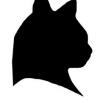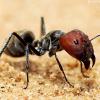- Do they like high humidity? Will Drew's starter formicaria be OK with them? (also thinking about getting that)
- How big do colony's get?
- When do they get majors?
- How do you feed them liquid foods, they tend to drown themselves?
- Does anyone have any experience with this species, if so could you explain your experience with them and anything else that I may need to know?
Edited by Major, August 15 2018 - 8:56 AM.


















